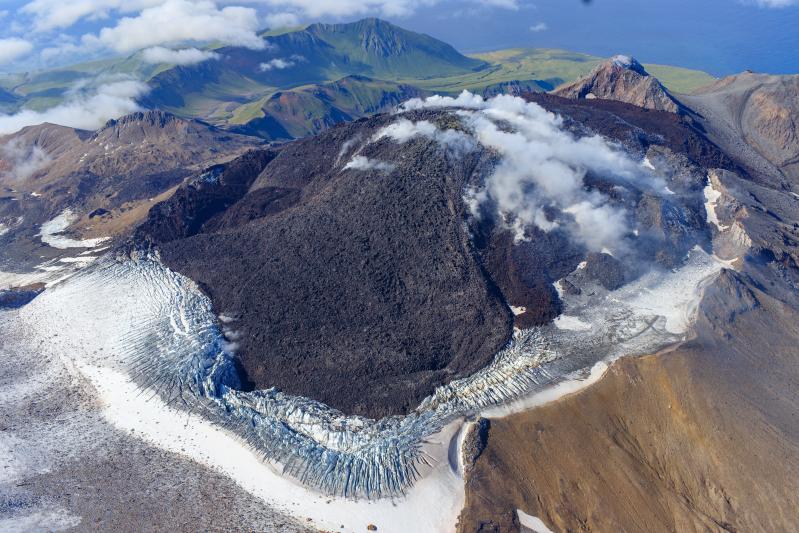| Red (Warning) | |
| Orange (Watch) | |
| Yellow (Advisory) | |
| Green (Normal) | |
| Uninstrumented |
Aleutians
(52.0765, -176.1109)2025-05-16 20:15:06 UTC
Activity at Great Sitkin Volcano continued over the past week. The unrest was characterized by the slow eruption of lava in the summit crater and occasional small earthquakes. Satellite and web camera observations were obscured by clouds over most of the past week but weakly elevated surface temperatures consistent with lava emissions were observed in clear satellite views from this morning.
Since the May 2021 explosion, there have been no other explosions at Great Sitkin Volcano. The lava eruption that began in July 2021 is ongoing. It has filled most of the summit crater and advanced into valleys below. The volcano is monitored using local seismic and infrasound sensors, satellite data and web cameras, and regional infrasound and lightning networks.
Cook Inlet-South Central
(61.2989, -152.2539)2025-05-16 20:15:06 UTC
Unrest continues at Mount Spurr. The level of unrest is still above background, but lower than observed in early 2025. The likelihood of an eruption has declined since March, but explosive eruptions like those in 1953 and 1992 are still possible. Should unrest escalate, we expect seismicity at higher levels than present, lasting weeks or months, more robust gas emissions, and higher deformation rates.
Earthquakes detected at the volcano are smaller than those caused by tectonic activity and cannot be felt. During the past week, 92 earthquakes were located with most of the quakes smaller than Magnitude 1. This is an increase in located earthquakes compared to the previous eight weeks. Smaller quakes that cannot be located also occur several times per hour. Ground deformation at Mount Spurr has slowed over the past month, like the pause that occurred for several weeks in November and December 2024. Although it has slowed over the past month, an increase in observed deformation over the past week is likely due to seasonal effects.
Views of the summit from local web cameras showed a vapor plume when viewing conditions were clear. No significant surface changes were observed at Crater Peak. Weak sulfur dioxide emissions were detected several times in satellite data this week when clouds did not obscure the volcano summit. A recently established livestream of Mount Spurr, as viewed from Glen Alps in Anchorage, is available here: Mount Spurr Live Stream (ANCG). An AVO field crew serviced multiple geophysical stations this week to clear snow and improve data transmission.
AVO continues to closely monitor activity at Mount Spurr for signals indicating the volcano is moving closer to an eruption using local seismic, infrasound, and GNSS (GPS) stations, web cameras, airborne and satellite gas measurements, regional infrasound, lightning networks, and satellite images. Based on previous eruptions, additional changes in earthquakes, ground deformation, the summit lake, and fumaroles would be expected if magma moves closer to the surface. Therefore, if an eruption occurred, it would be preceded by additional signals allowing advance warning.



